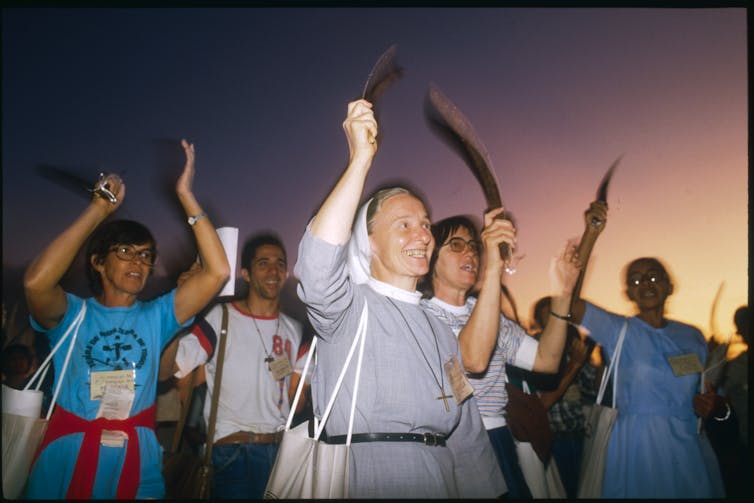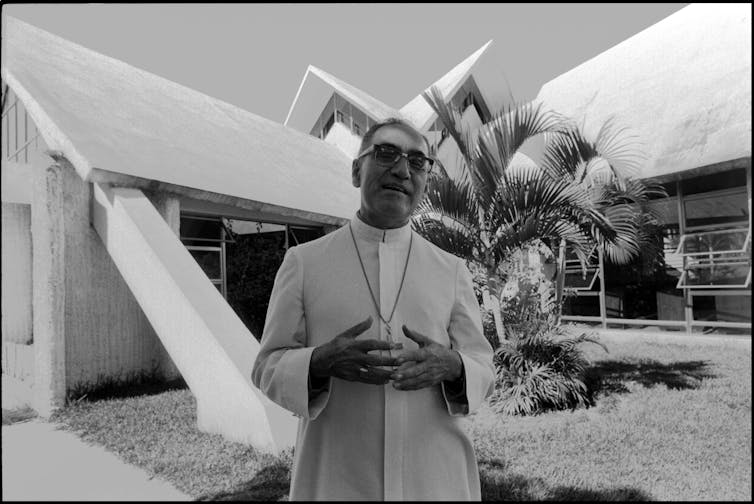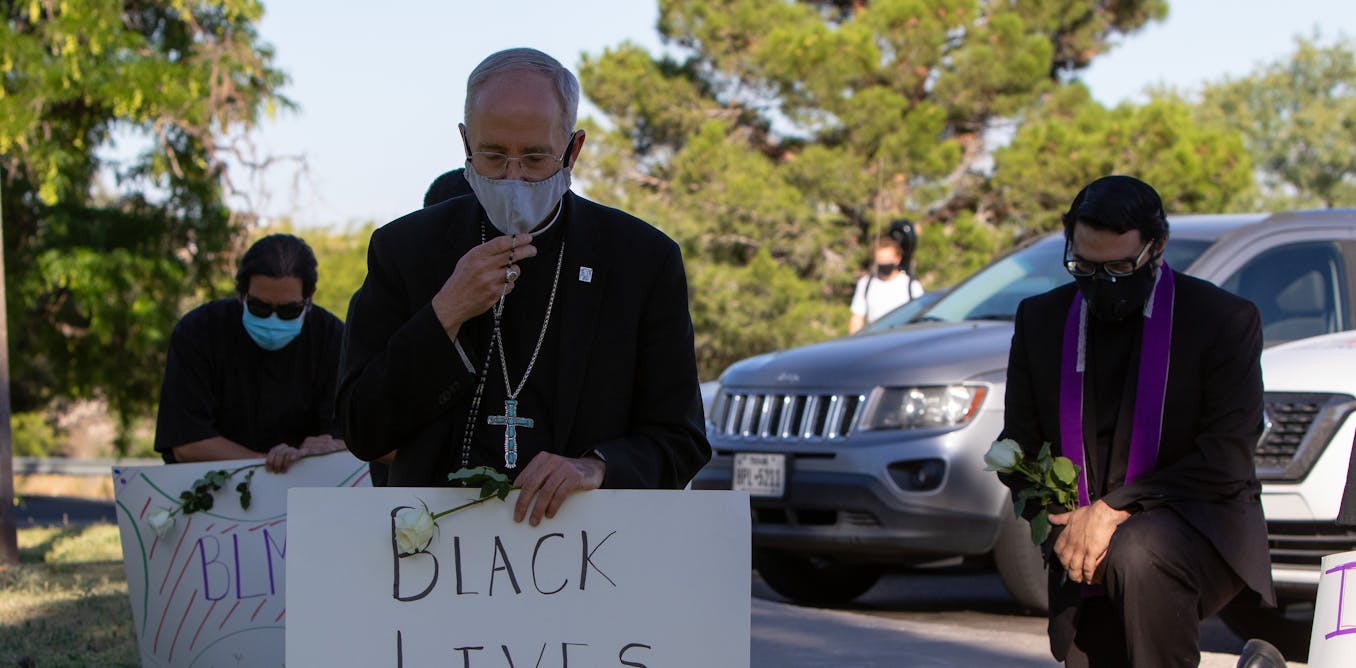[ad_1]
Two days after the Catholic Bishop of El Paso, Mark Seitz, knelt with a dozen other priests in a silent prayer for George Floyd holding a “Black Lives Matter” sign, he received a phone call from the Pope. Francois.
In earlier times, Seitz, the first known Catholic bishop to join anti-racism protests sparked by Floyd’s murder, might have expected censorship from the Vatican, which is often associated with social conservatism.
Instead, Steitz told Texan news site El Paso Matters, the Pope “thanked me.”
Days earlier, Pope Francis posted a message to Americans on the Vatican website saying he “had witnessed with great concern the disturbing social unrest” in the United States and called Floyd’s death “tragic. “.
“My friends,” he wrote, “we cannot tolerate or condone racism and exclusion in any form and yet claim to uphold the sanctity of every human life.”
Francis is considered a progressive pope, but these are not isolated examples of his personal values. As a scholar of religion and politics, I recognize that Steitz’s actions and the Pope’s endorsement reflect a distinctive commitment to social justice that has entered Catholic mainstream over the past 50 years.
Mario Tama / Getty Images
Change of social role
This commitment has transformed a thousand-year-old Catholic tradition that favors peace over justice.
Writing in the chaos surrounding the fall of the Roman Empire, prominent 5th-century theologian Saint Augustine argued that peace is the greatest good humans can achieve on Earth. While both peace and justice are precious, Augustine thought, peace – that is, civil order – takes precedence. He believed that justice could not be maintained in the midst of violence.
Many bishops, priests, and theologians since Augustine have used similar arguments to criticize social change and legitimize the status quo, insisting that the faithful should endure the injustices of the world and seek their reward in heaven. This moral theology justified the church’s alliance with economic, political and military elites, from medieval kings to Latin American dictators.
This began to change with the Second Vatican Council from 1962 to 1965, which brought together bishops from around the world to reassess the role of the Church in modern society. The council’s final document spoke strongly in favor of social justice.
Reversing Augustine’s thought, the Catholic bishops affirmed that peace cannot “be reduced to the maintenance of a balance of power between enemies”. The only way to achieve lasting peace, they argued, was to tackle the sources of the unrest.
As Pope Paul VI said in 1972: “If you want peace, work for justice.

Tom Williams / CQ-Roll Call, Inc via Getty Images
Liberation at all costs
Pope Paul’s rhetoric echoed a fundamental tenet of liberation theology, a Catholic movement that was emerging in Latin America around the same time.
Liberation theologians see violence not as an individual flaw but as a feature of unjust social or political structures. This “institutionalized violence,†as Peruvian theologian Gustavo Gutiérrez called it, is the root cause of all violence – including government repression and popular uprisings against it.

Bernard Bisson / Sygma via Getty Images)
The best way to avoid violence, as Archbishop Oscar Romero of El Salvador wrote in 1979, is to “ensure a truly democratic state, a state that upholds the fundamental rights of all its citizens, based on an order. fair economic â€.
Under Romero’s leadership, large sections of the Salvadoran Catholic Church supported the popular uprising against the country’s oppressive military regime in what has become the Salvadoran civil war. Catholic and secular leaders also supported opposition movements in Nicaragua, Brazil, Chile and other Latin American countries.
Romero, assassinated in 1980, became a Catholic saint in 2018.
Not “on both sides”
Liberation theologians believe that those who seek change should use peaceful methods whenever possible. But when non-violent protests and legislative avenues are unsuccessful or encounter violence, new tactics may be needed.
“The church cannot simplistically state that it condemns all forms of violence,†Romero wrote.
Romero criticized Salvadoran “moderates†who viewed violence on both sides of the country’s civil war as equally bad, implying moral equality between those who support injustices and those who challenge them. The church, he insisted, must side with the victims of institutionalized violence.

Alex Bowie / Getty Images
This principle, known as the “preferential option for the poorâ€, guided Bishop Seitz’s decision to demonstrate in El Paso.
“When religion stagnates, we can forget that the Word always comes to us crucified and helpless,†Seitz told the National Catholic Reporter on June 4, explaining his silent protest. In Christian tradition, “the Word†refers to Jesus, the Word of God incarnate.
Seitz then quoted the eminent mid-century theologian James Cone, who said that American Christians must fight for racial justice because “In America the Word comes tortured, black and lynched.”
This is not the first time that Seitz has sided with the most marginalized in society. In March 2019, he apologized to migrants for their treatment at the US-Texas border.
“To say… that black lives matter is just another way of repeating something that we in America so often seem to forget,†Seitz continued: “That God has a special love for the forgotten and the oppressed.
[Deep knowledge, daily. Sign up for The Conversation’s newsletter.]
[ad_2]

